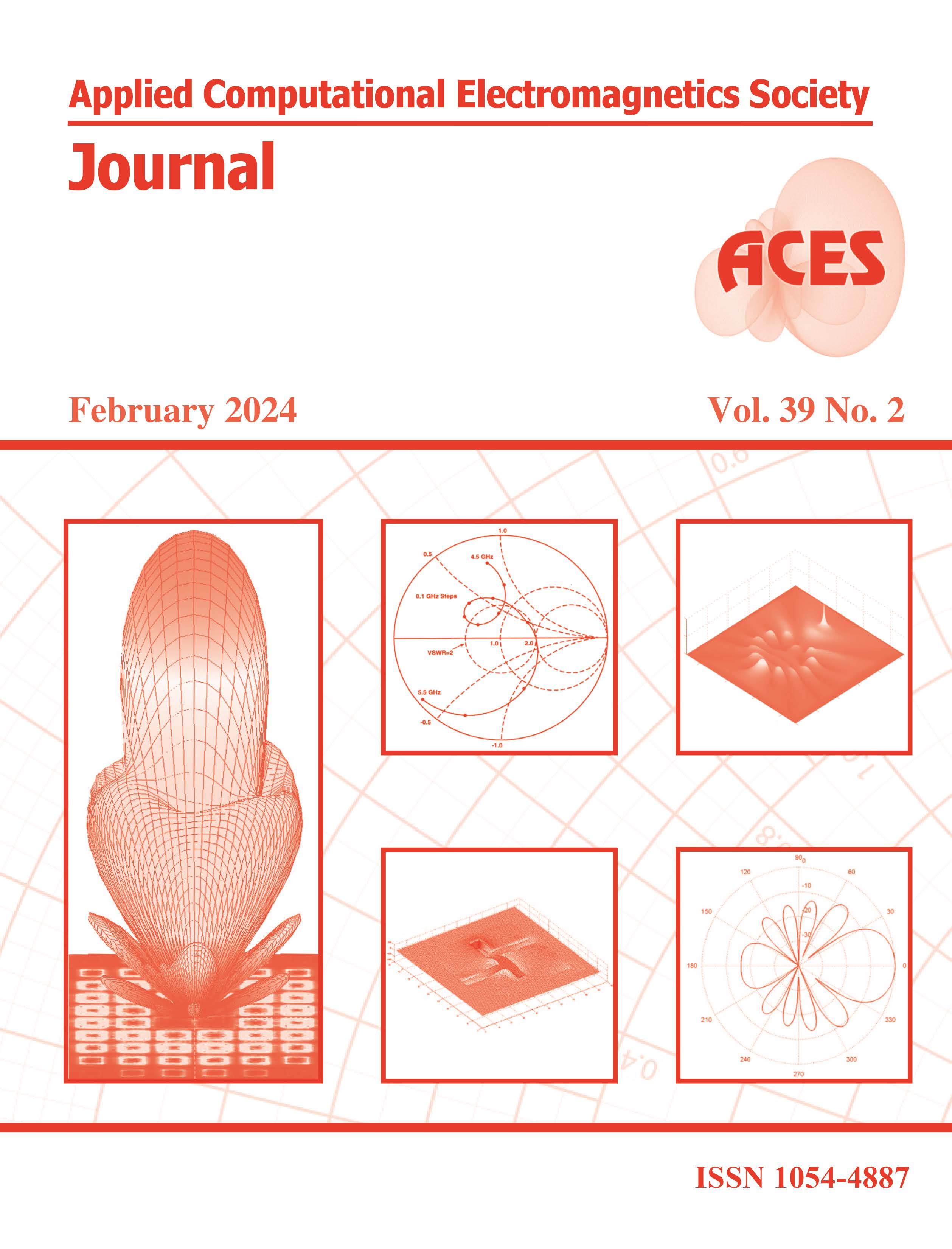PSSFSS—An Open-source Code for Analysis of Polarization and Frequency Selective Surfaces
DOI:
https://doi.org/10.13052/2024.ACES.J.390207Keywords:
computer code, frequency selective surface, FSS, Julia programming language, open-source, polarization selective surface, radome, reflectarrayAbstract
The open-source code PSSFSS for analysis and design of polarization selective surfaces (PSSs), and frequency selective surfaces (FSSs) is presented, beginning with an introduction to the Julia programming language in which the code is written. Analysis methods and algorithms used in PSSFSS are described, highlighting features of Julia that make it attractive for developing this type of application. Usage examples illustrate the code’s ease of use, speed, and accuracy.
Downloads
References
P. S. Simon, “PSSFSS — Analysis of polarization and frequency selective surfaces in Julia,” [Online]. Available: https://github.com/simonp0420/PSSFSS.jl
The Julia Programming Language. [Online]. Available: https://julialang.org
JuliaHub. Parallel Supercomputing for Astronomy. [Online]. Available: https://juliahub.com/case-studies/celeste
P. S. Simon. PSSFSS User Manual. [Online]. Available: https://simonp0420.github.io/PSSFSS.jl/stable/manual
P. S. Simon, “PSSFSS theory documentation,” Tech. Report, May 2021. [Online]. Available: https://github.com/simonp0420/PSSFSS.jl/blob/main/docs/TheoryDocs/theorydoc.pdf
P. S. Simon, “Modified RWG basis functions for analysis of periodic structures,” 2002 IEEE MTT-S Int. Microwave Symp. Dig., vol. 3, pp. 2029-2032, Seattle, WA, June 2002.
P. S. Simon, “Efficient Green’s function formulation for analysis of frequency selective surfaces in stratified media,” Dig. 2001 IEEE AP-S Int. Symp., vol. 4, pp. 374-377, Boston, MA, July 2001.
J. R. Shewchuk, “Triangle: Engineering a 2D quality mesh generator and delaunay triangulator,” Applied Computational Geometry: Towards Geometric Engineering, ser. Lecture Notes in Computer Science, M. C. Lin and D. Manocha, Eds. Springer-Verlag, vol. 1148, pp. 203-222, May 1996.
StaticArrays—statically sized arrays for Julia. [Online]. Available: https://github.com/JuliaArrays/StaticArrays.jl
D. R. Wilton, S. M. Rao, A. W. Glisson, D. H. Schaubert, O. M. Al-Bundak, and C. M. Butler, “Potential integrals for uniform and linear source distributions on polygonal and polyhedral domains,” IEEE Trans. Antennas Propagat., vol. AP-32, no. 3, pp. 276-281, Mar. 1984.
K. A. Michalski and J. R. Mosig, “Multilayered media Green’s functions in integral equation formulations,” IEEE Trans. Antennas Propagat., vol. 45, no. 3, pp. 508-519, Mar. 1997.
M. Frigo and S. G. Johnson, “The design and implementation of FFTW3,” Proceedings of the IEEE, vol. 93, no. 2, pp. 216-231, 2005.
R. Redheffer, “Inequalities for a matrix riccati equation,” Journal of Mathematics and Mechanics, pp. 349-367, 1959.
R. C. Rumpf, “Improved formulation of scattering matrices for semi-analytical methods that is consistent with convention,” Progress In Electromagnetics Research B, vol. 35, pp. 241-261, 2011.
Y. Ding, K.-L. Wu, and D. G. Fang, “A broad-band adaptive-frequency-sampling approach for microwave-circuit em simulation exploiting Stoer-Bulirsch algorithm,” IEEE Trans. Microwave Theory Tech., vol. 51, no. 3, pp. 928-934, 2003.
L. A. Weinstein, The Theory of Diffraction and the Factorization Method: Generalized Wiener-Hopf Technique. Golem Press, 1969.
R. E. Collin, Field Theory of Guided Waves, 2nd ed. IEEE Press, 1991.
X. Wang and D. H. Werner, “Improved model-based parameter estimation approach for accelerated periodic method of moments solutions with application to the analysis of convoluted frequency selected surfaces and metamaterials,” IEEE Trans. Antennas Propag., vol. 58, no. 1, pp. 122-131, 2010.
G. Dahlquist and Å. Björck, Numerical Methods in Scientific Computing, Volume I. SIAM, 2008.
A. Ericsson and D. Sjöberg, “Design and analysis of a multilayer meander line circular polarization selective structure,” IEEE Trans. Antennas Propag., vol. 65, no. 8, pp. 4089-4101, 2017.
B. A. Munk, Frequency Selective Surfaces: Theory and Design. John Wiley & Sons, Inc., 2000.
L. Li, D. H. Werner, J. A. Bossard, and T. S. Mayer, “A model-based parameter estimation technique for wide-band interpolation of periodic moment method impedance matrices with application to genetic algorithm optimization of frequency selective surfaces,” IEEE Trans. Antennas Propag., vol. 54, no. 3, pp. 908-924, 2006.




